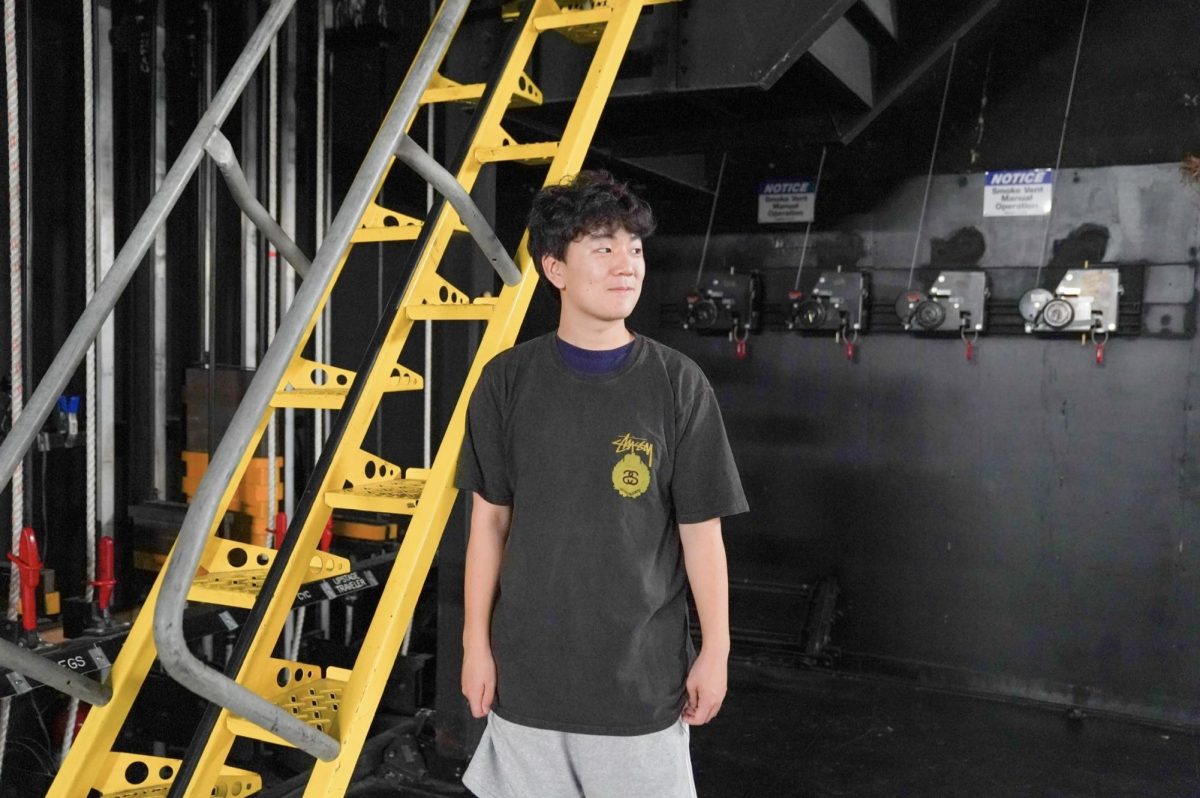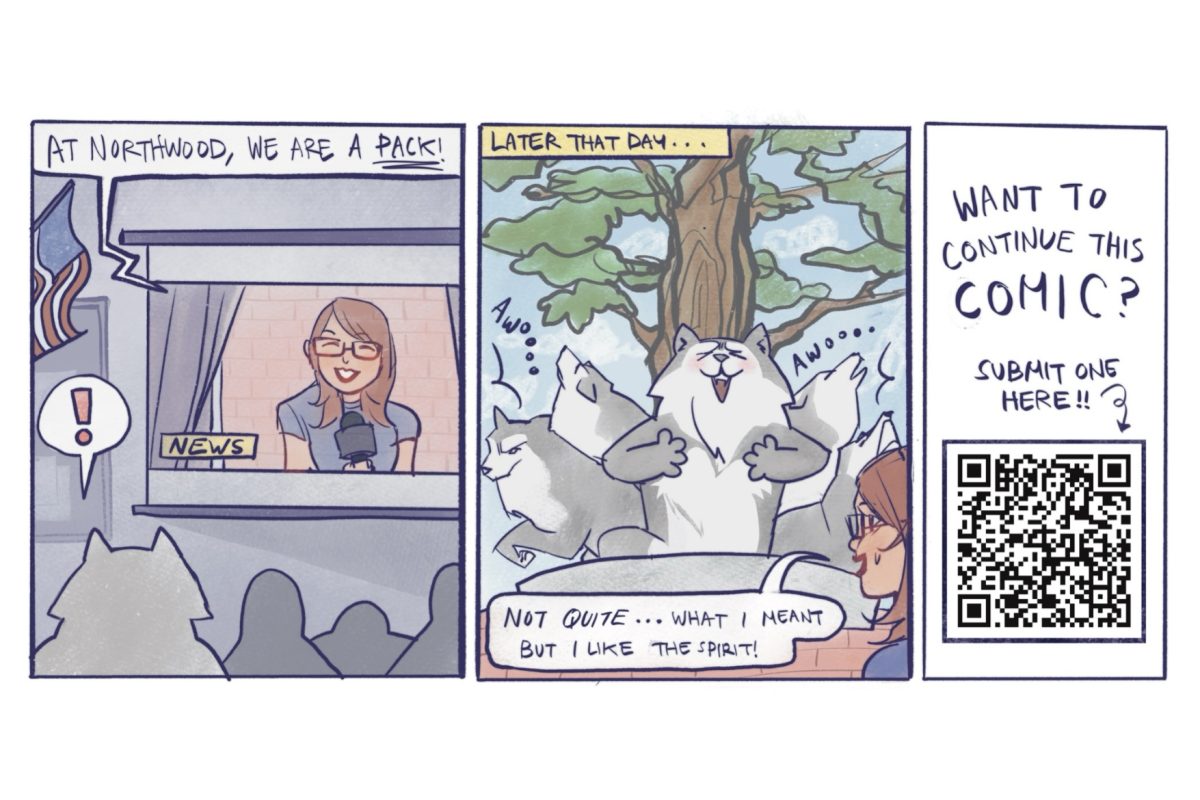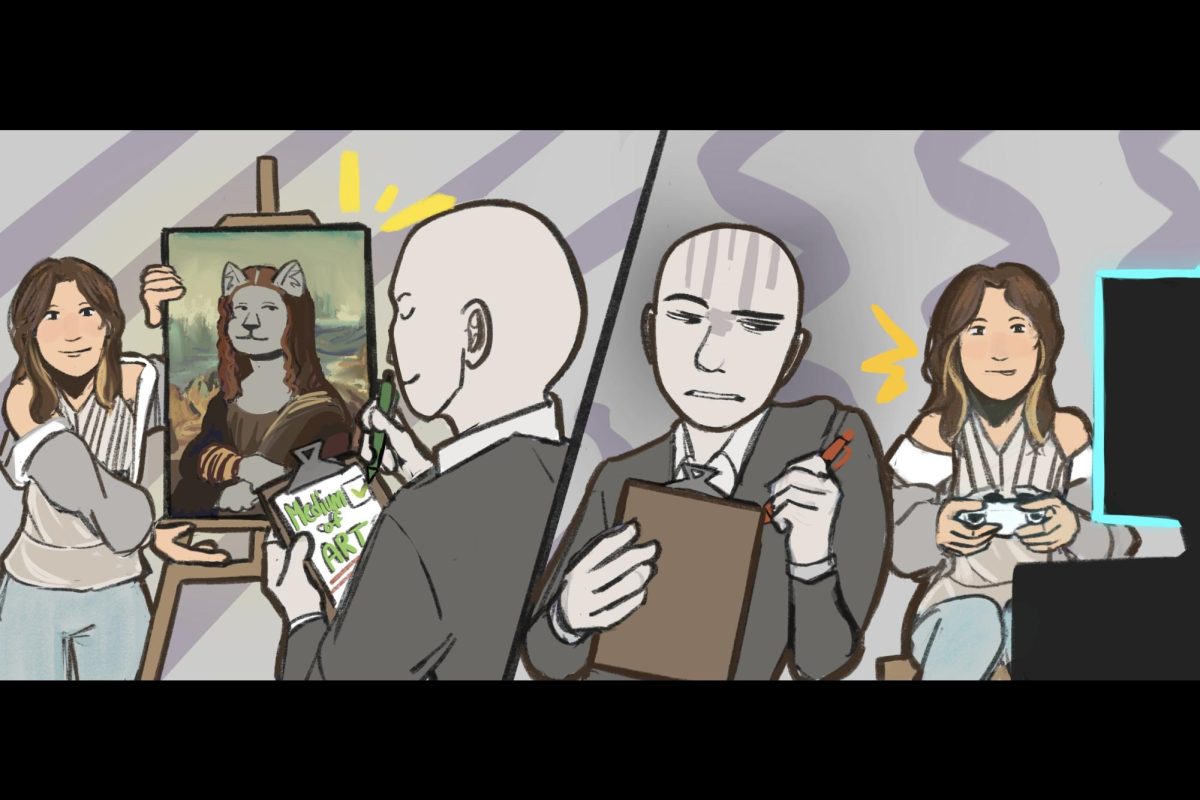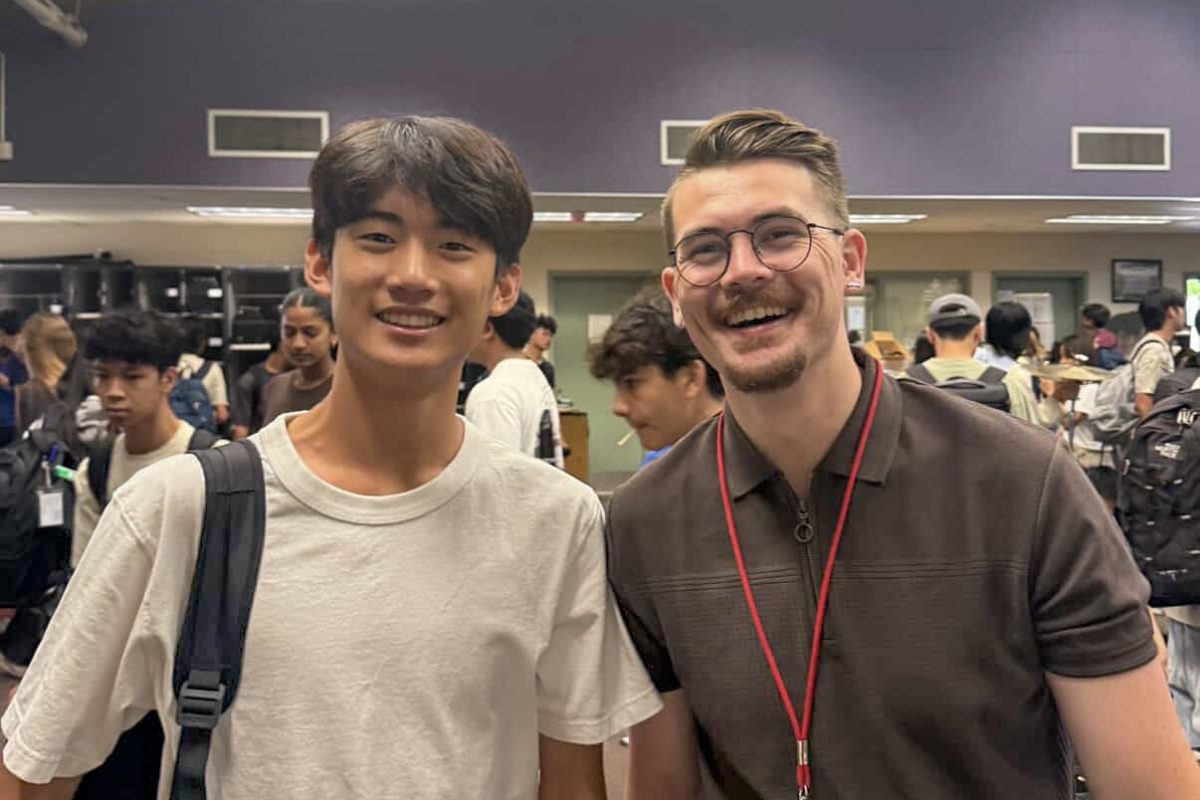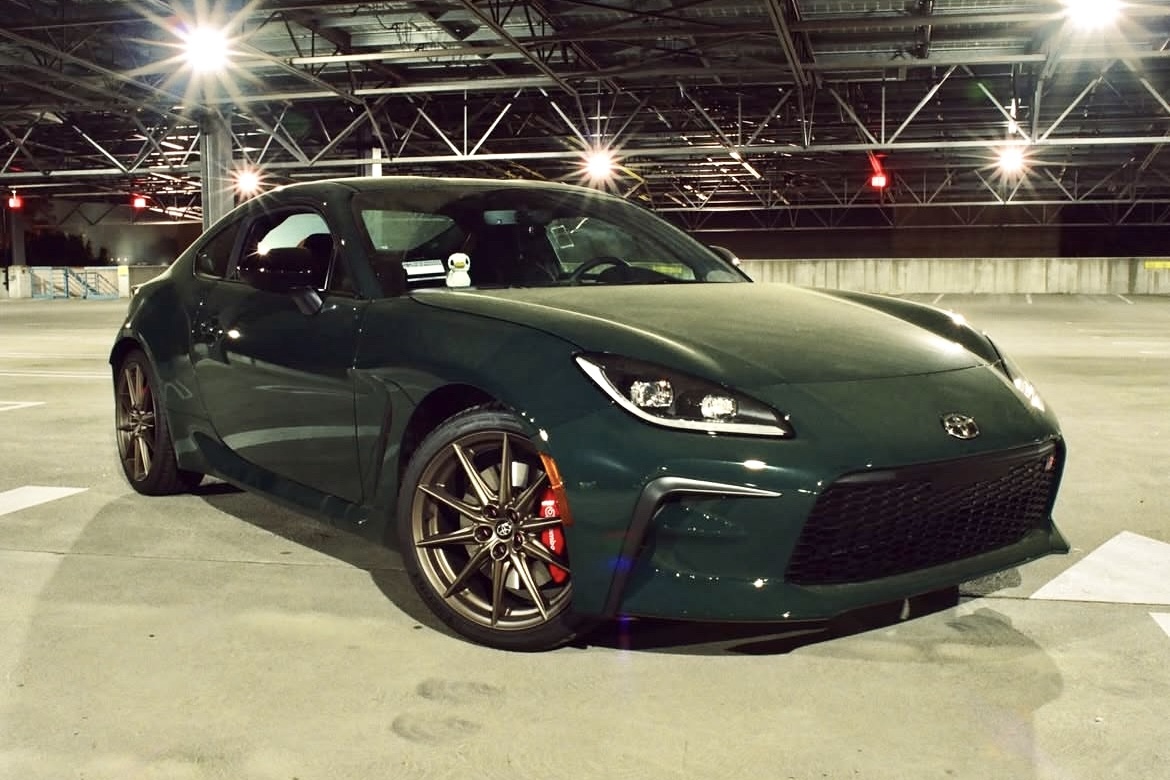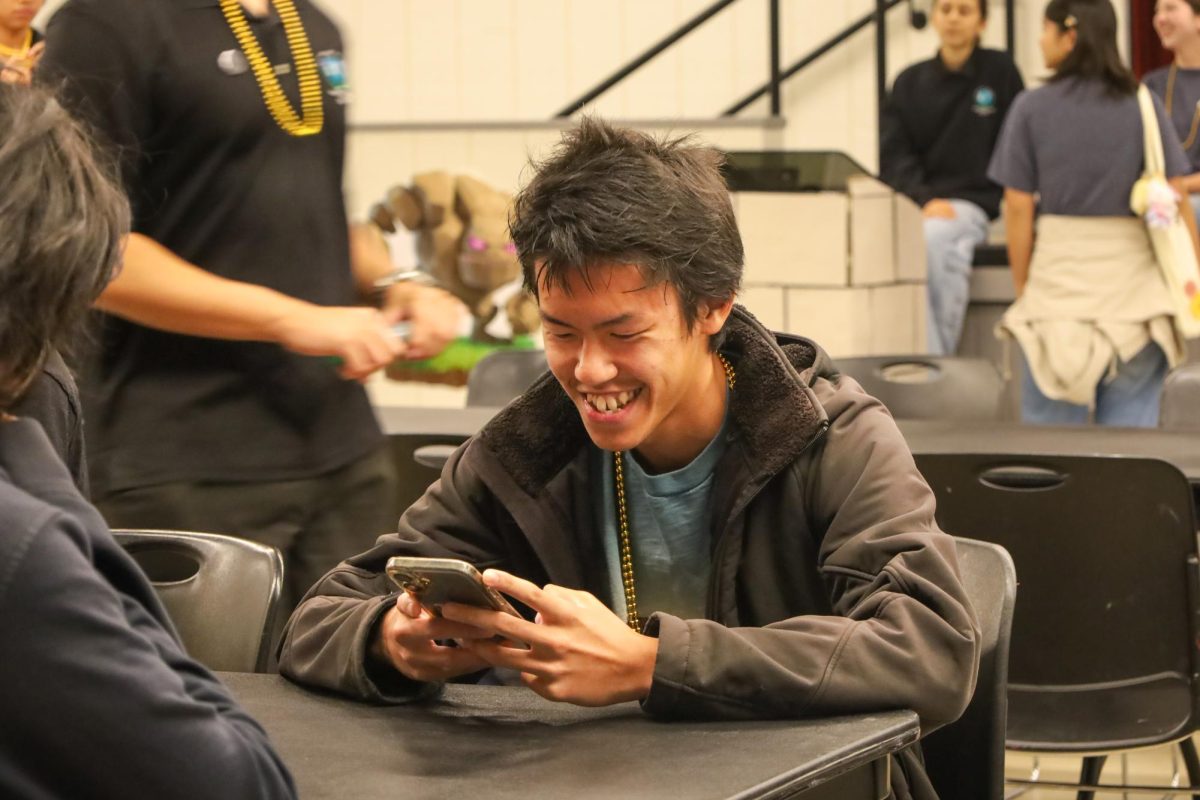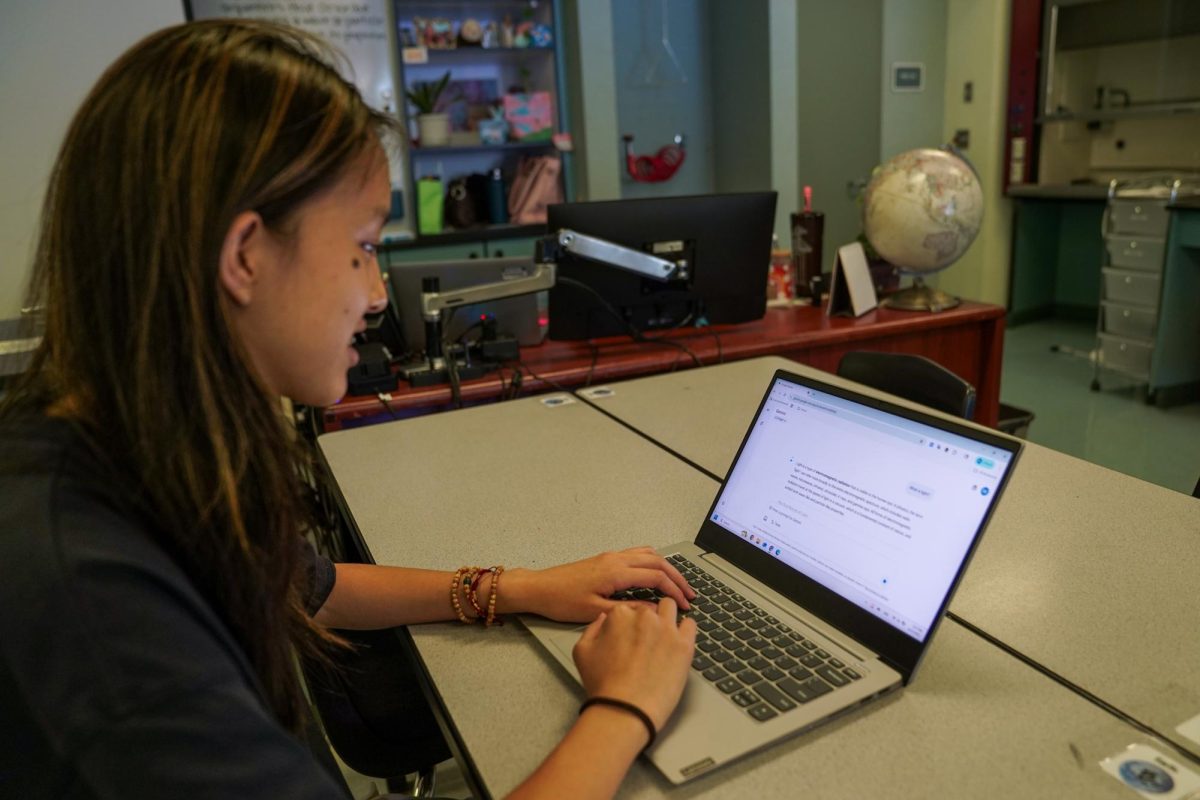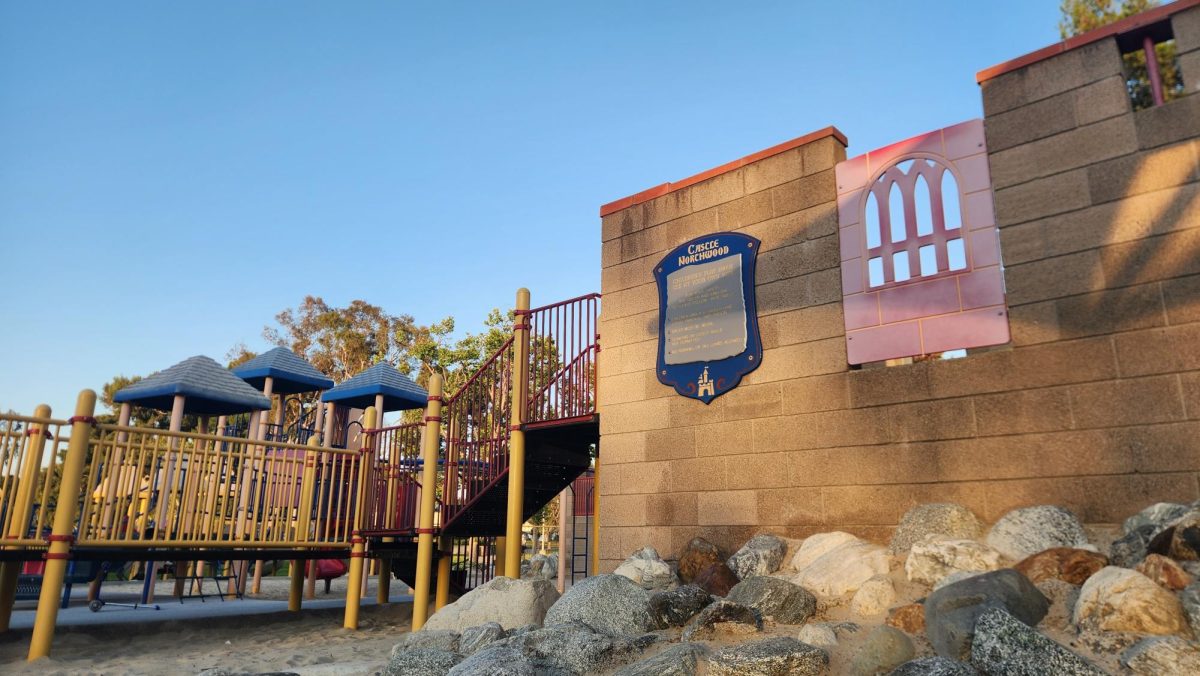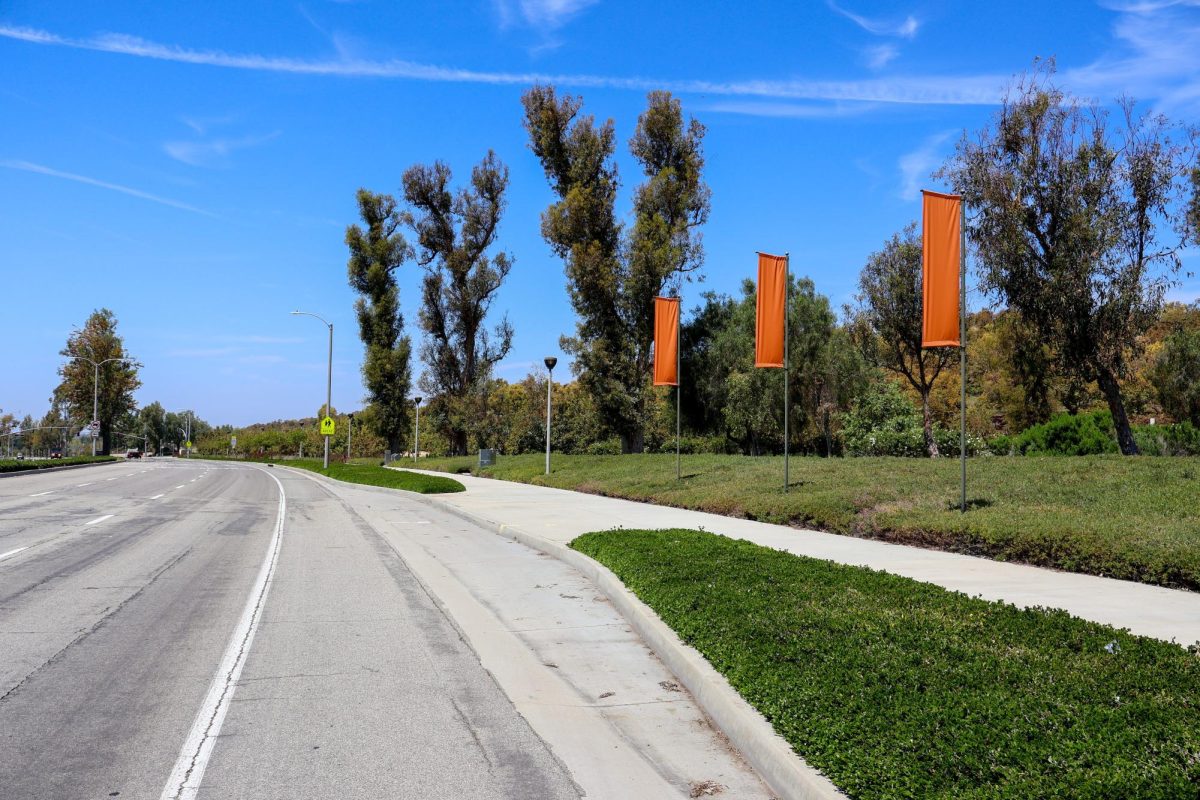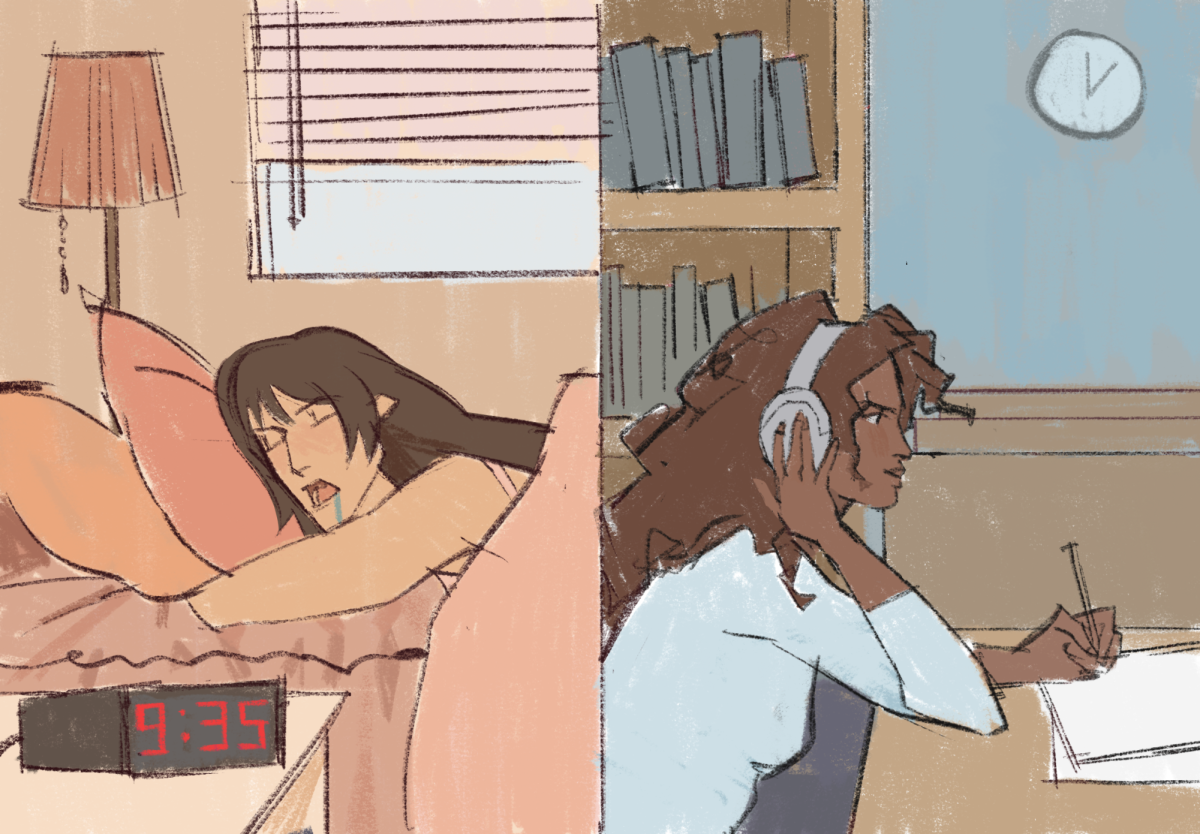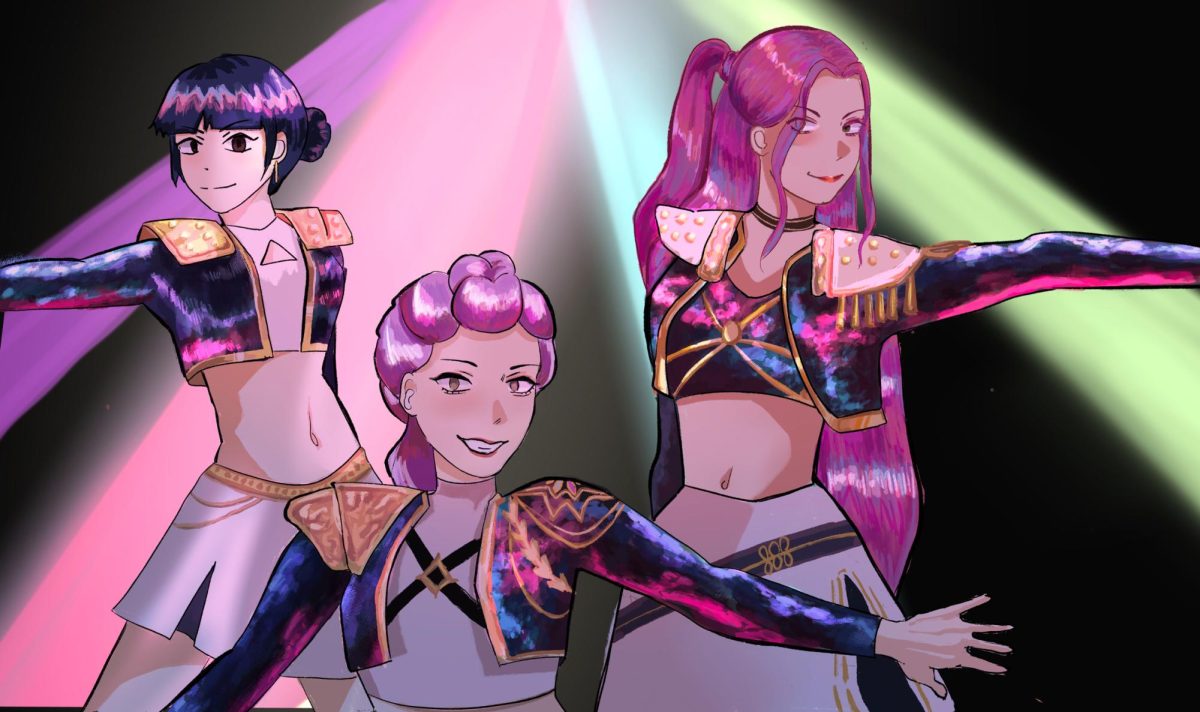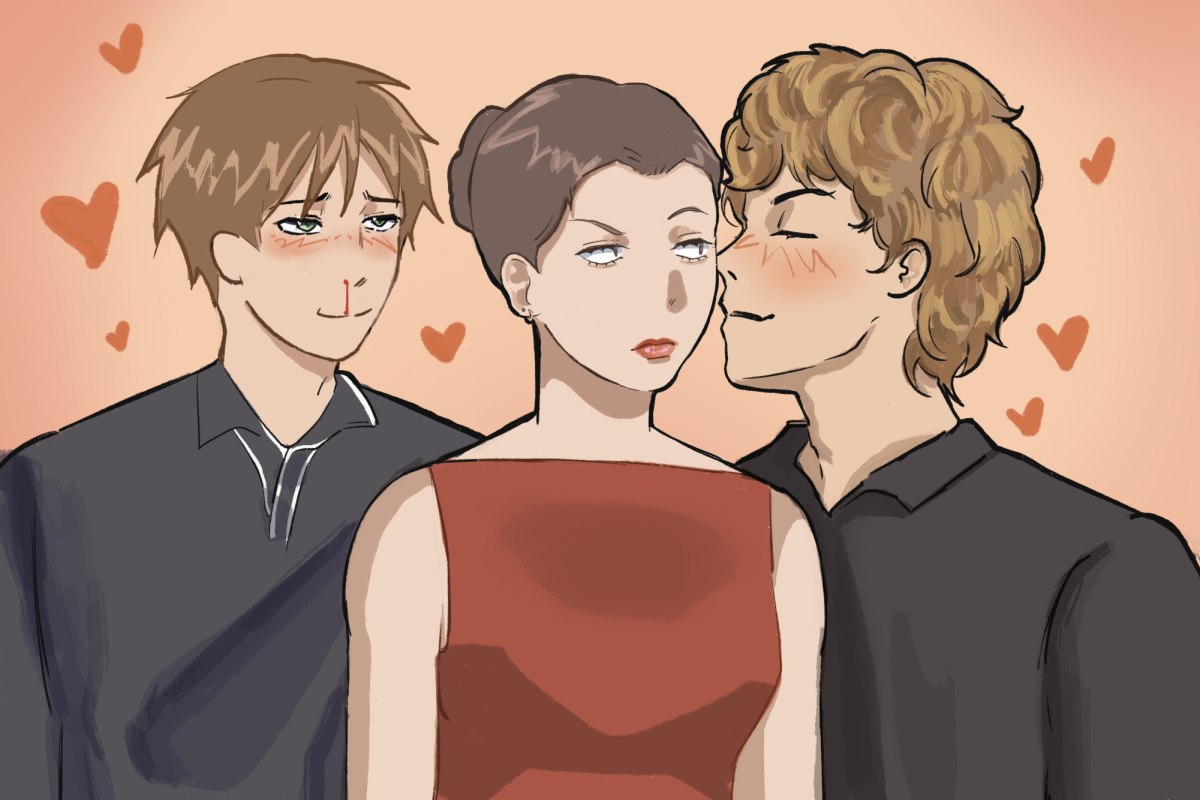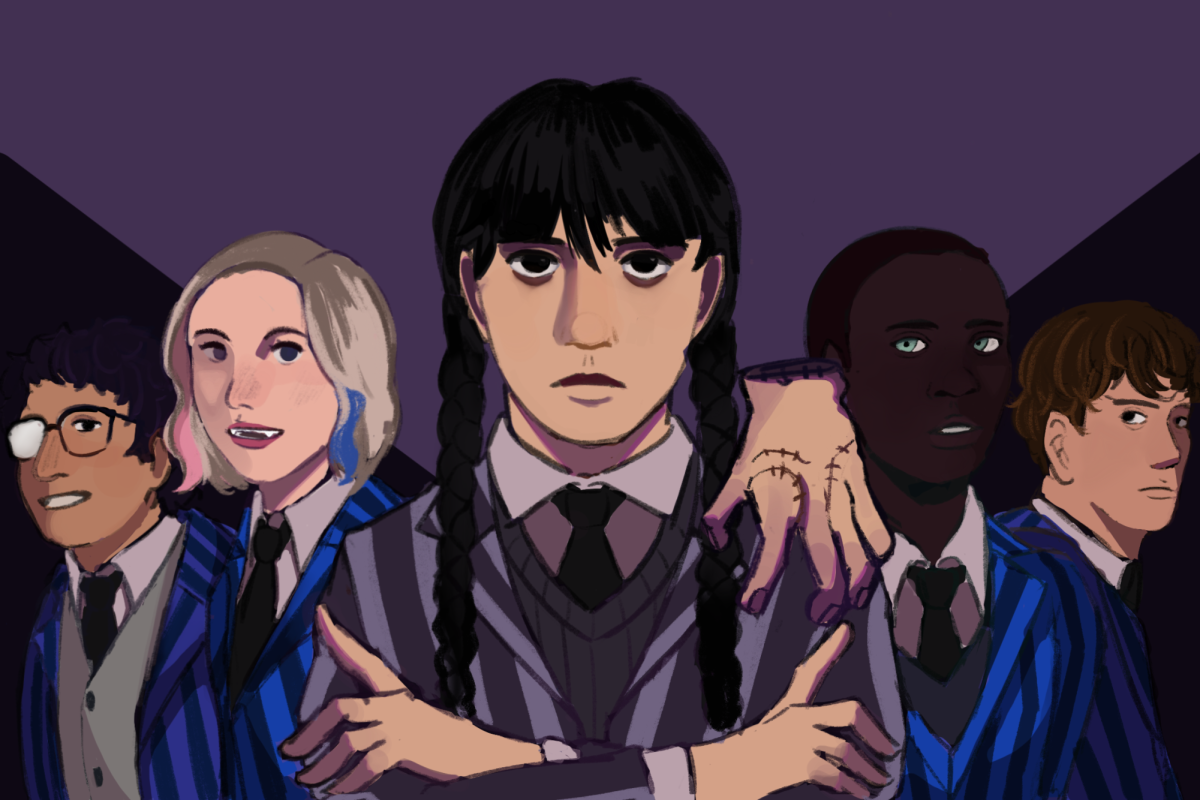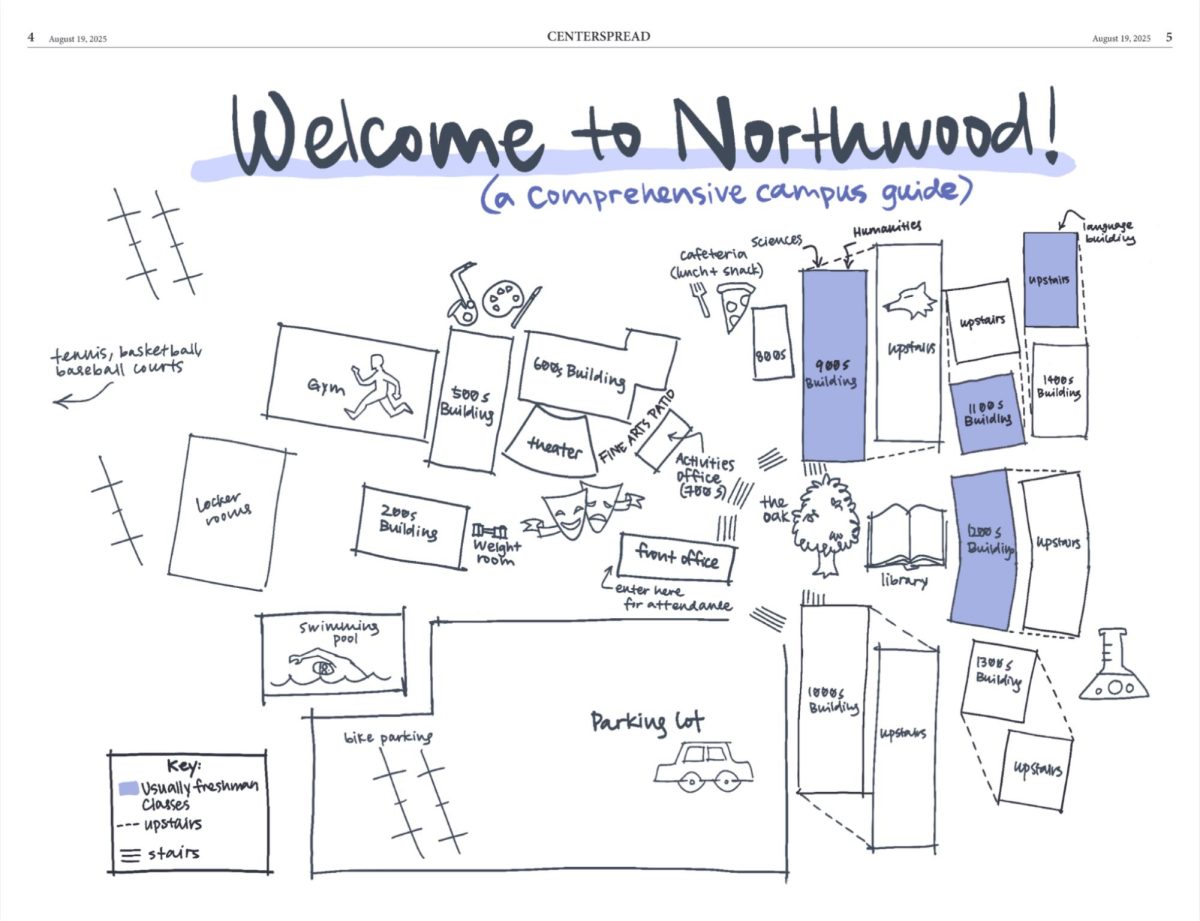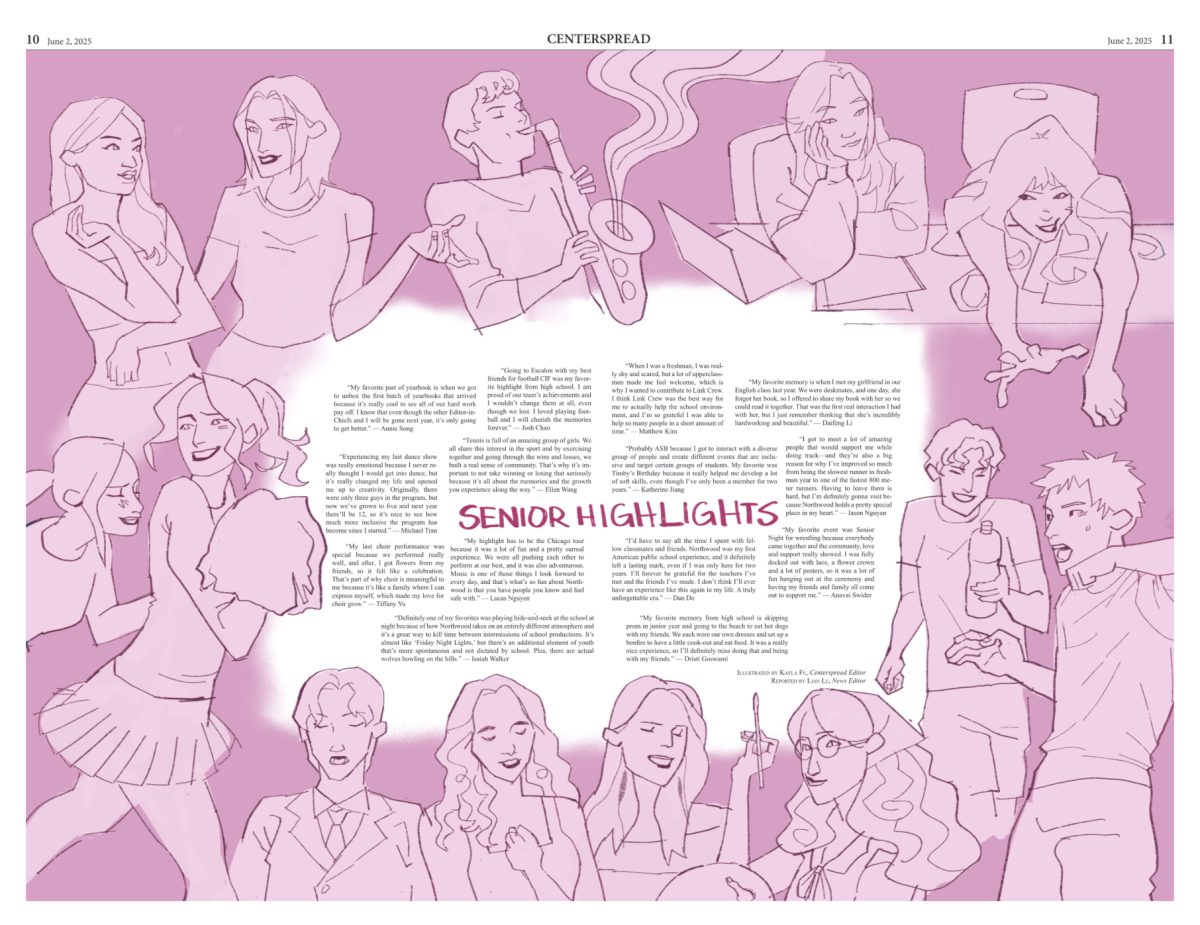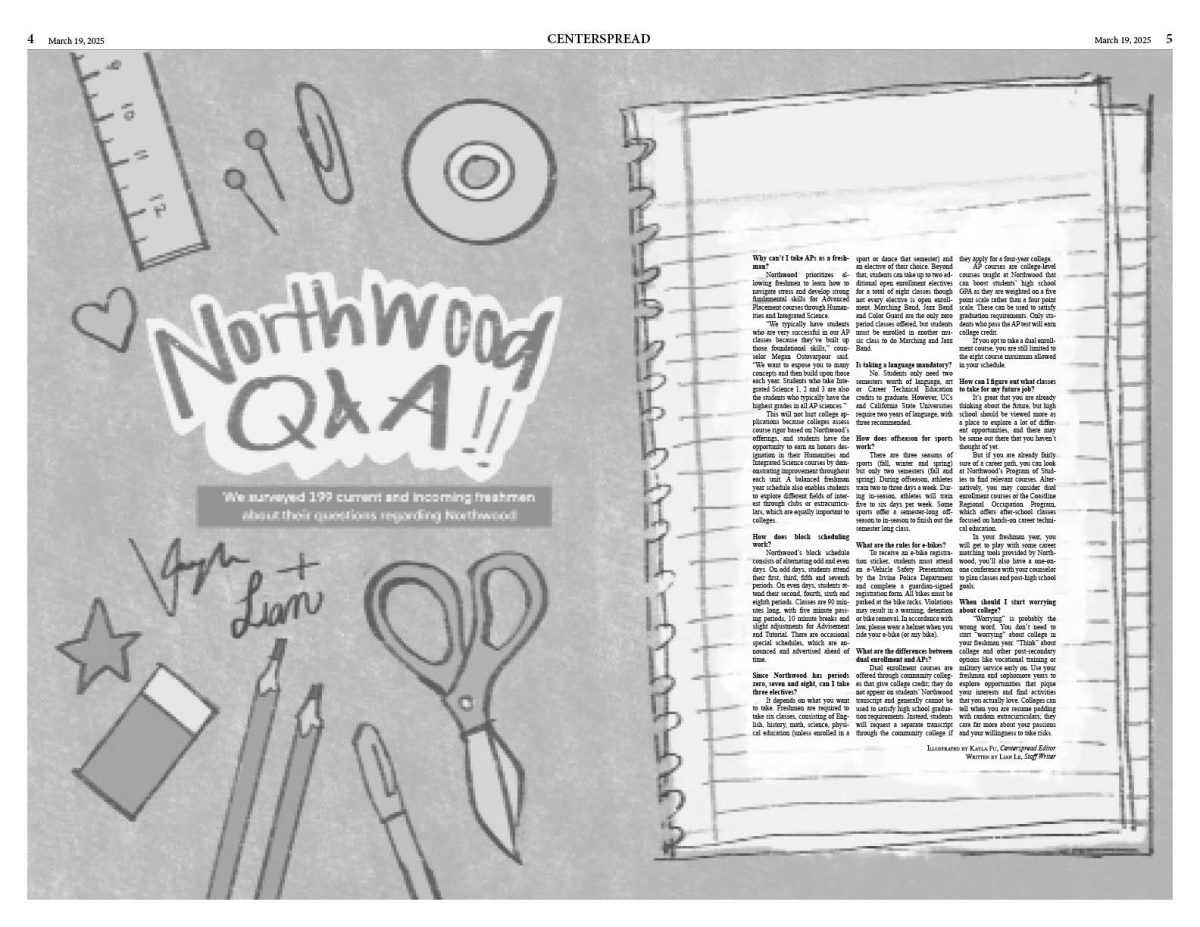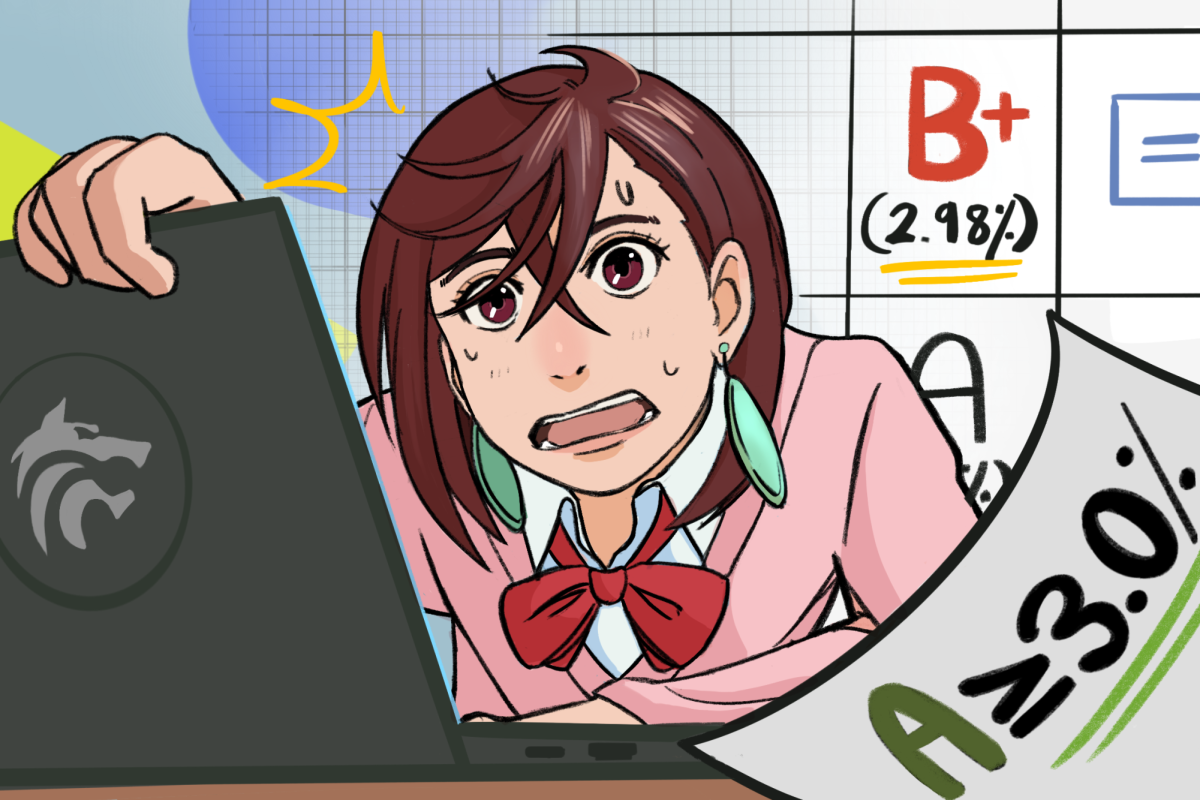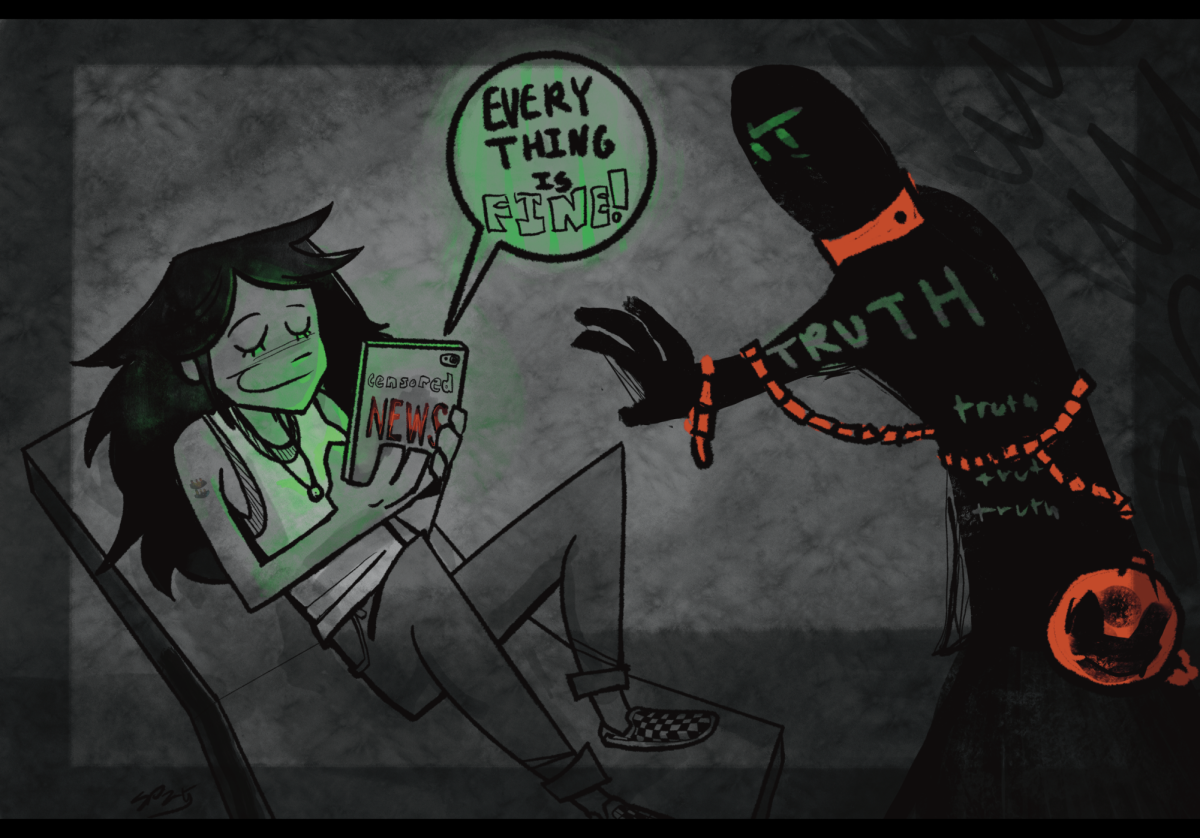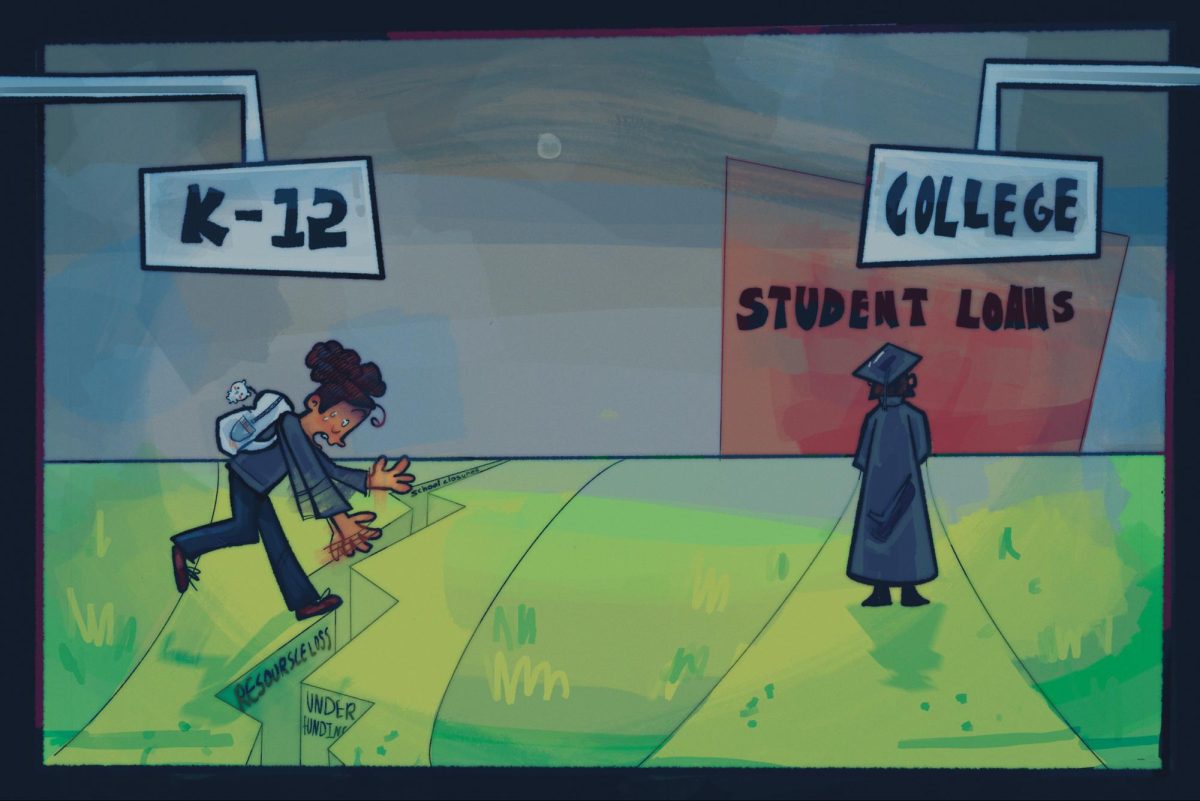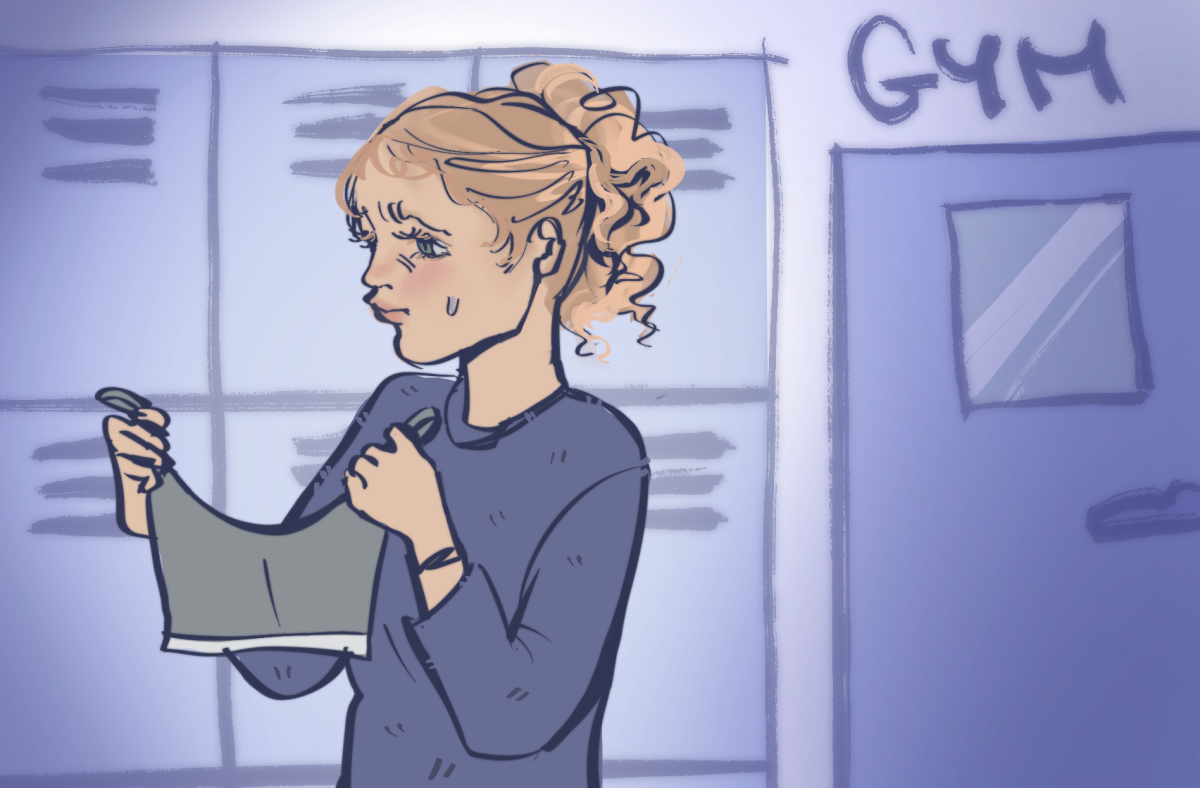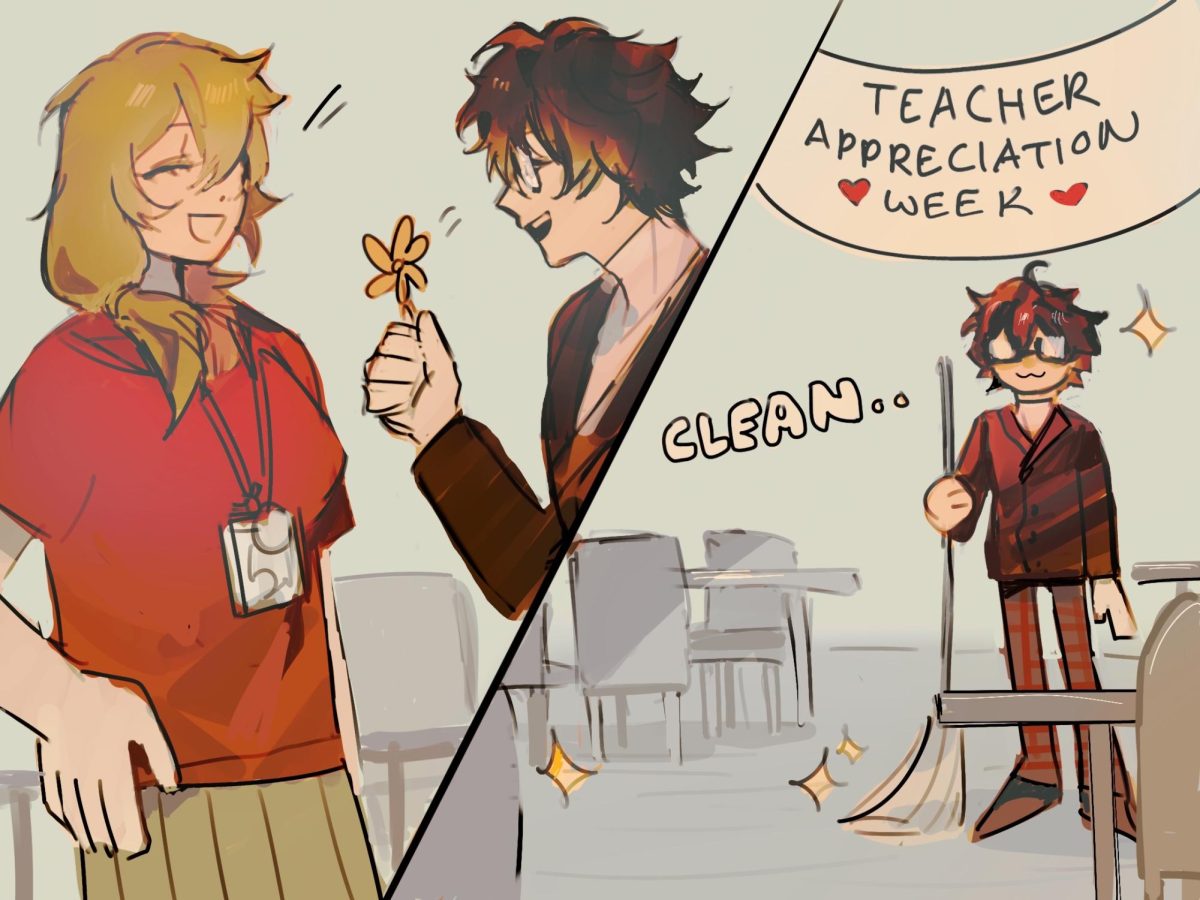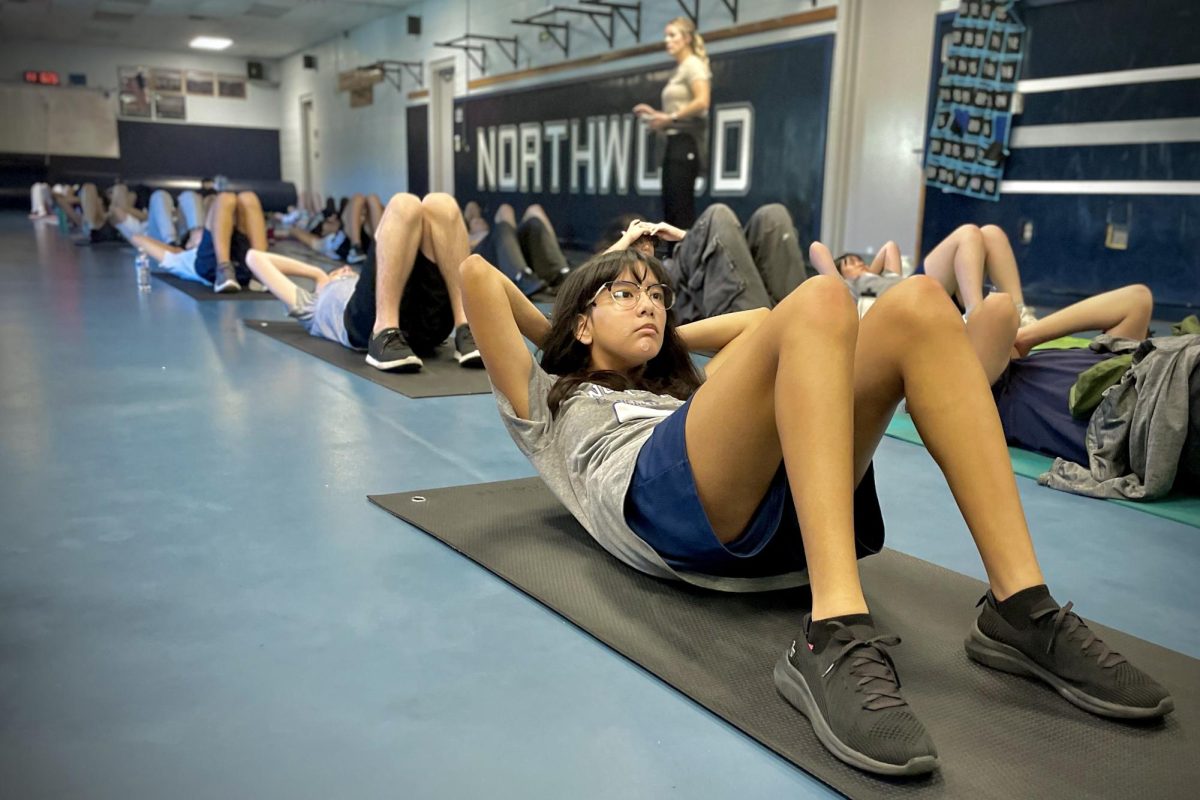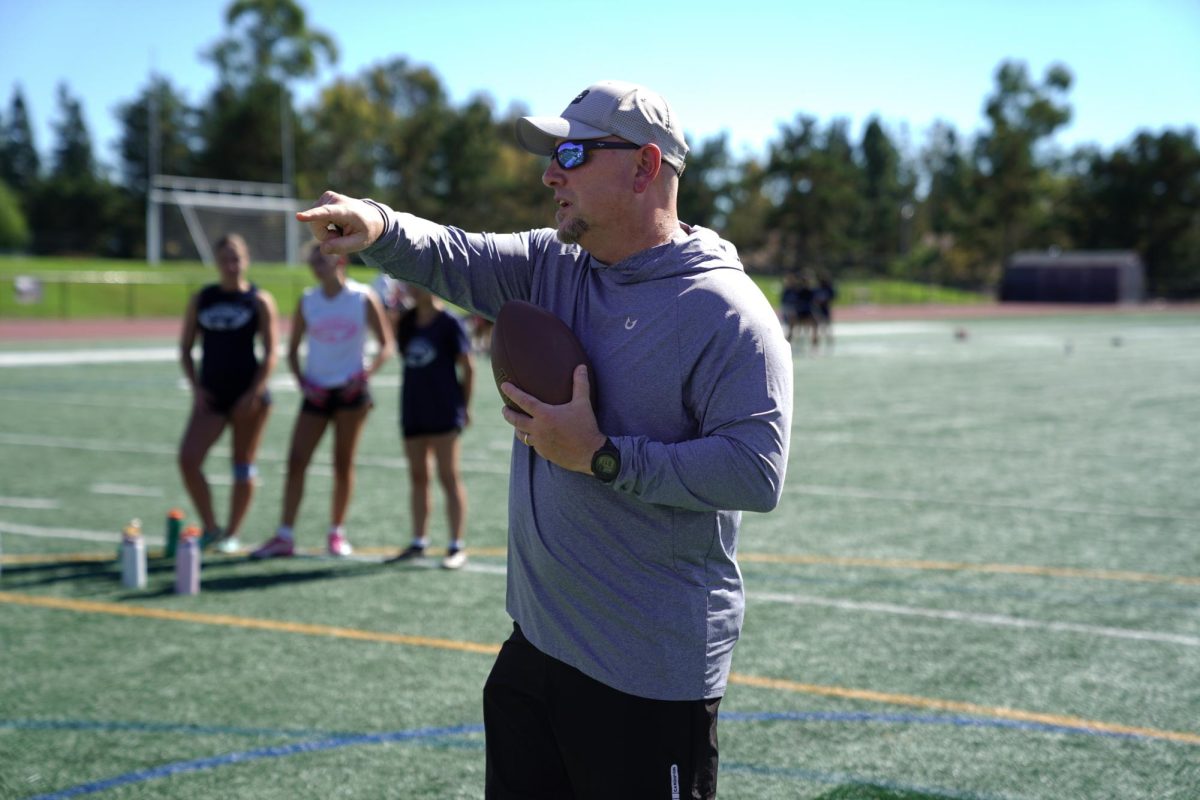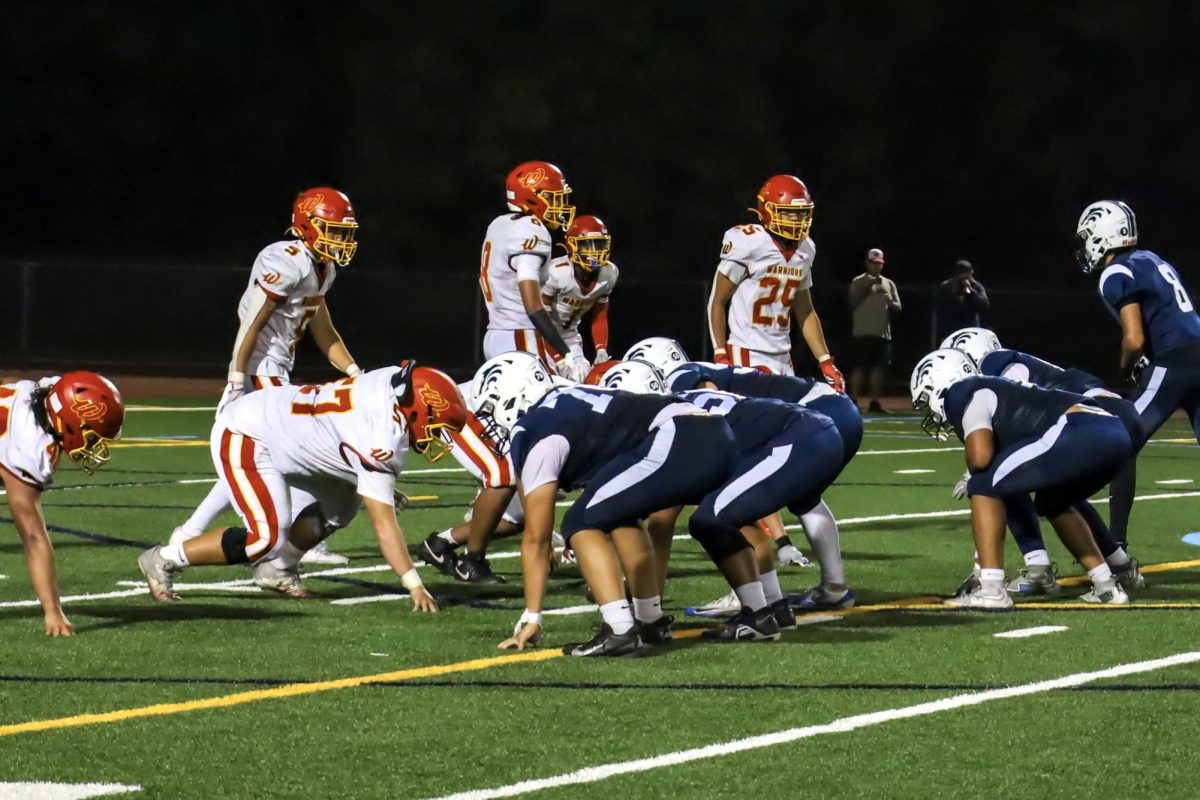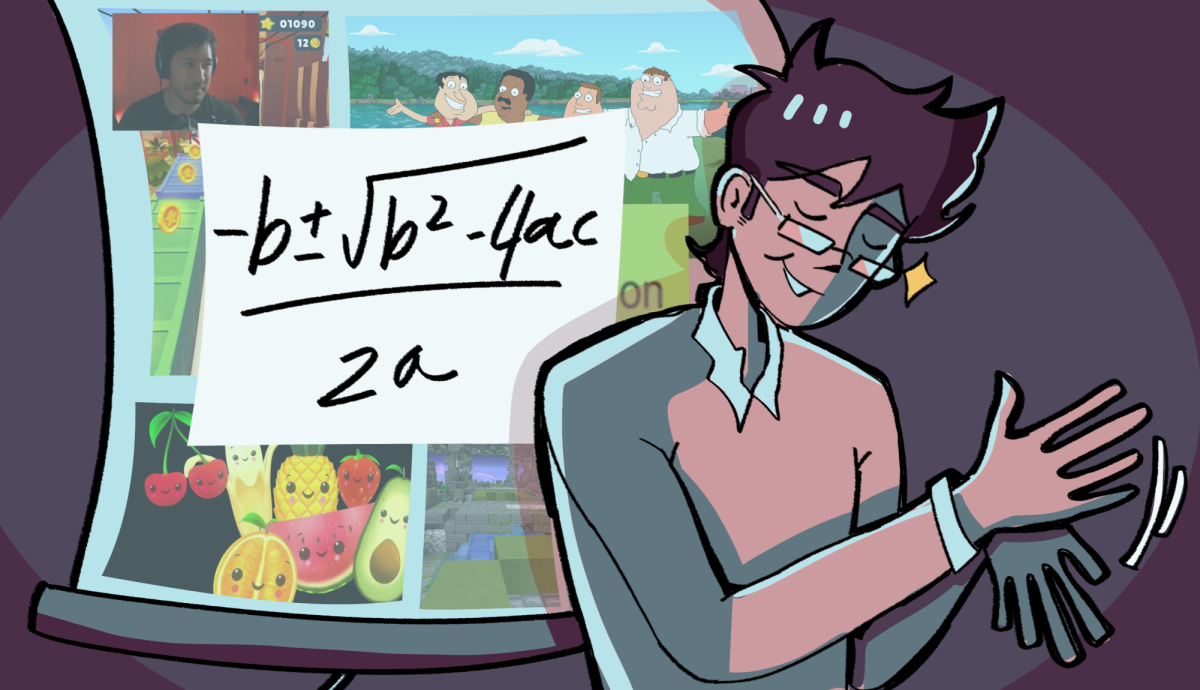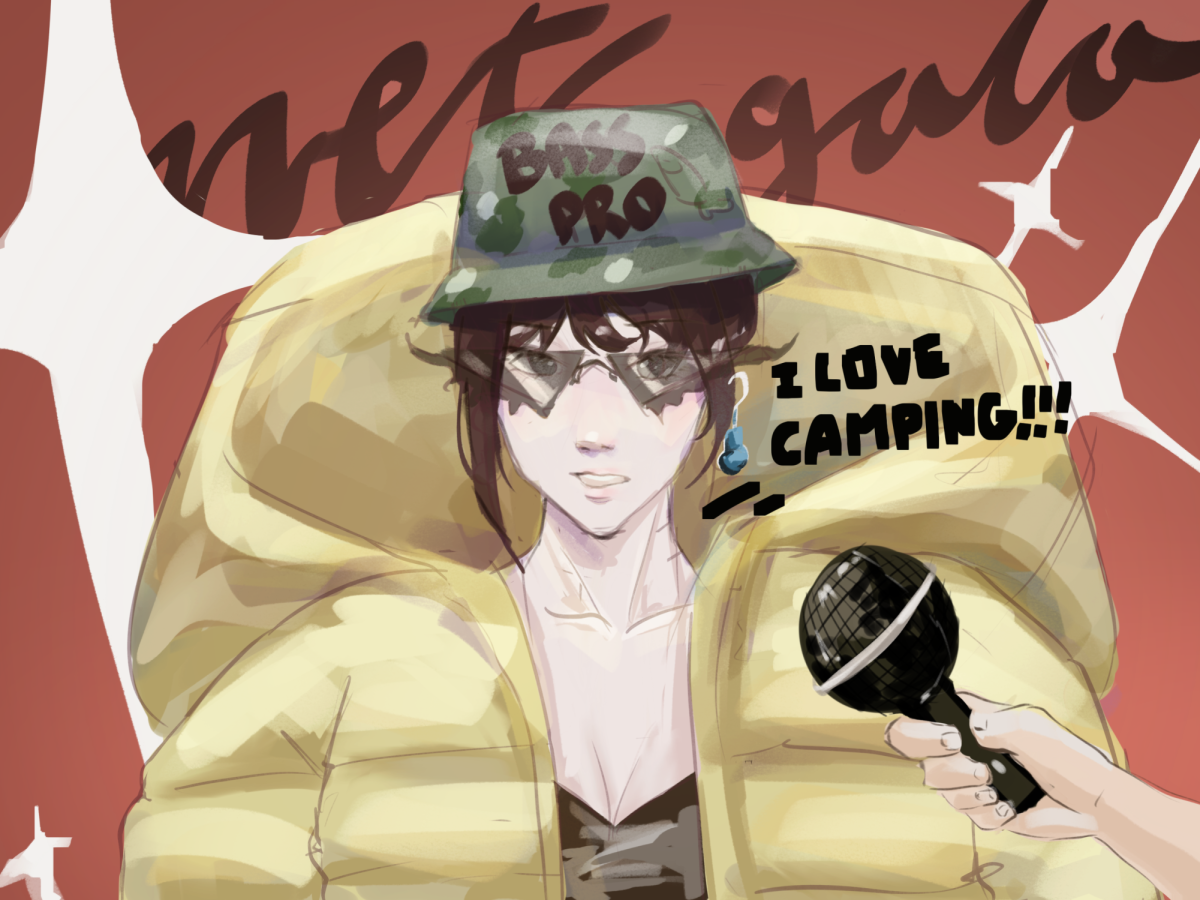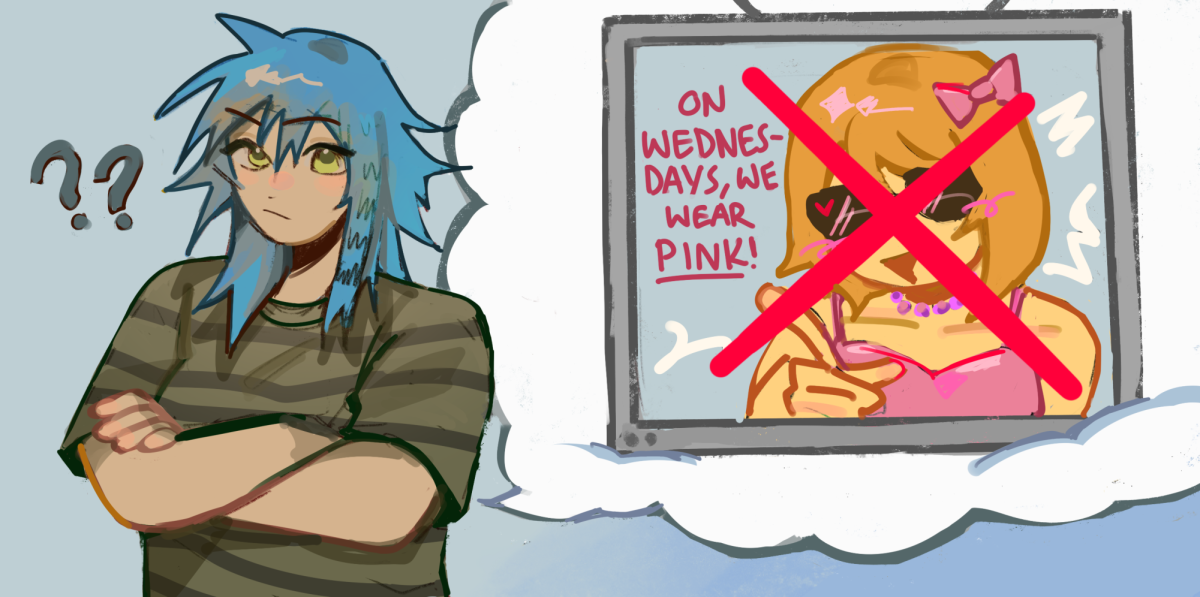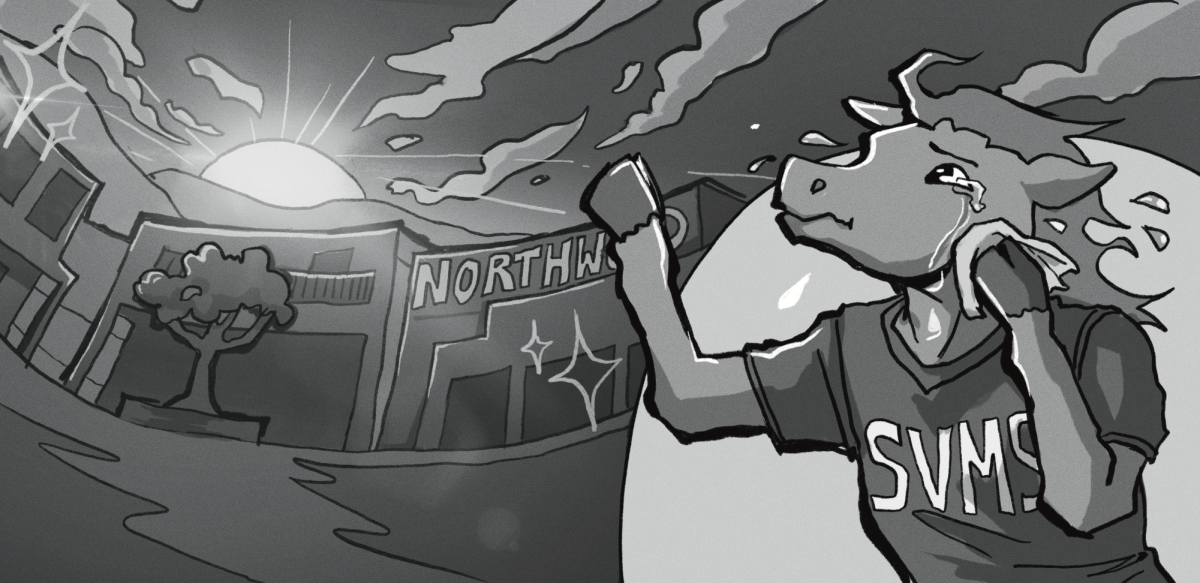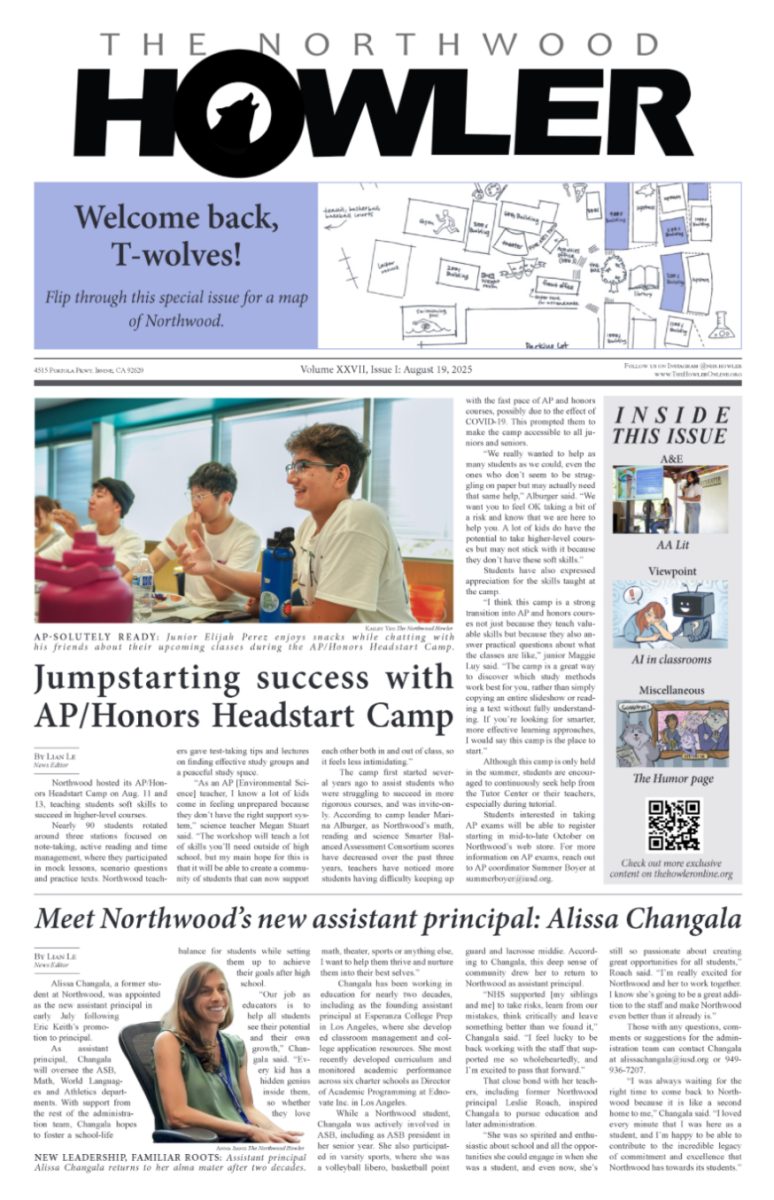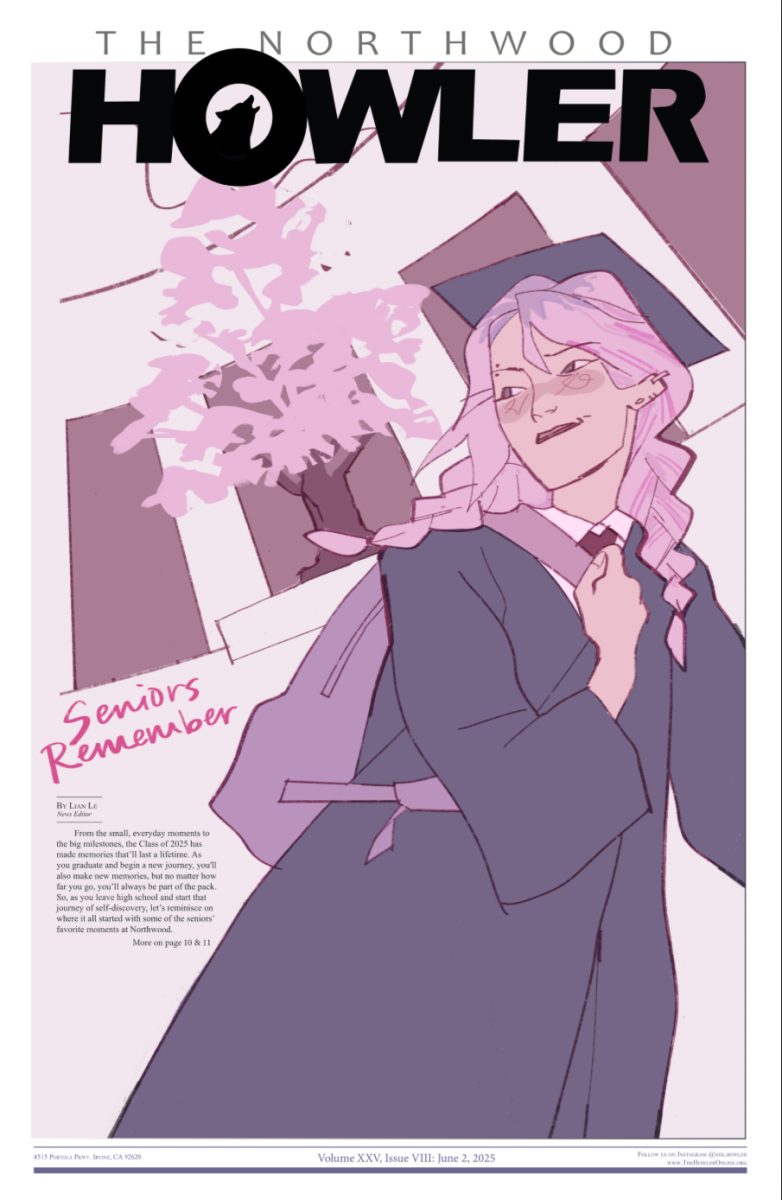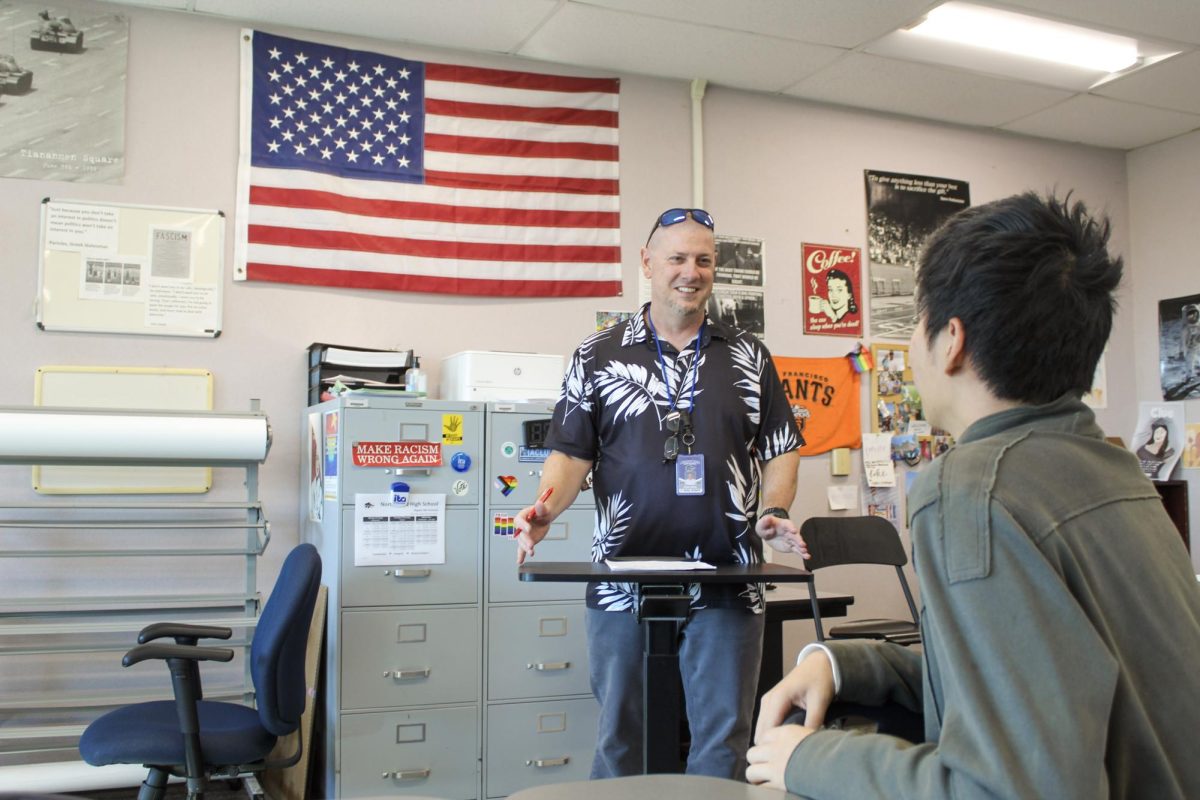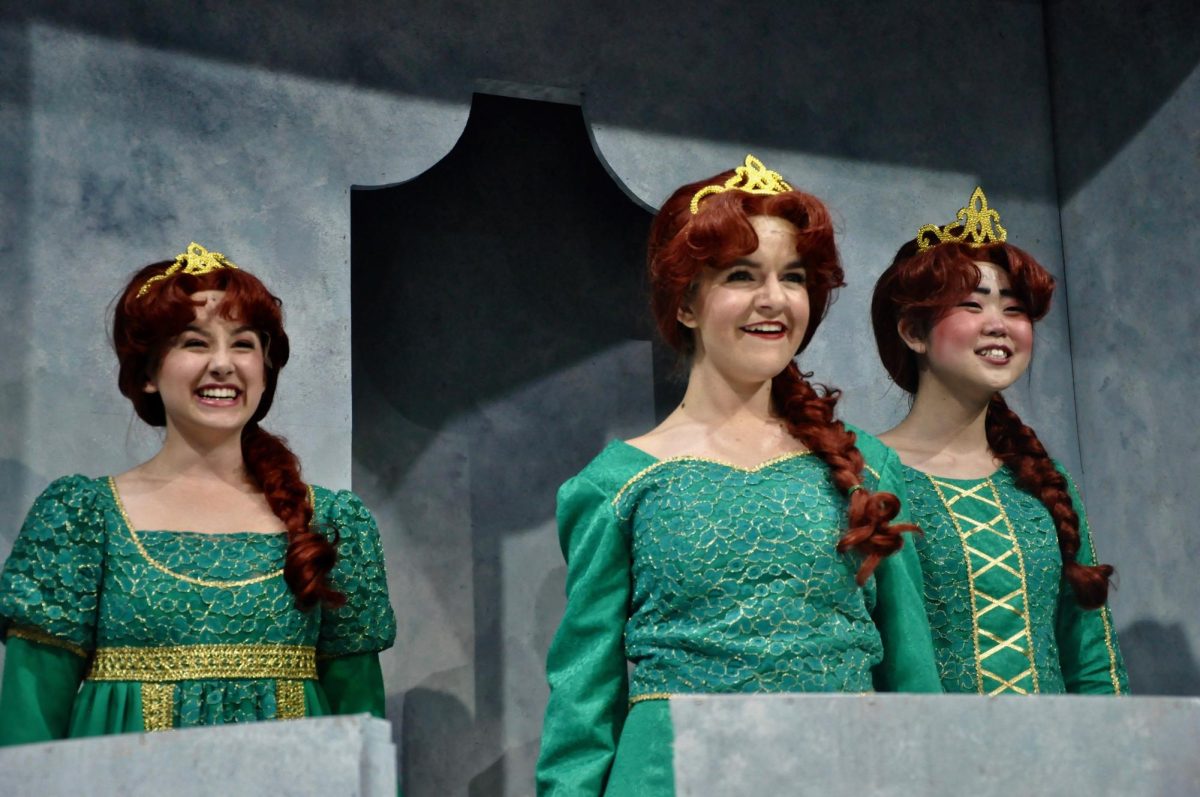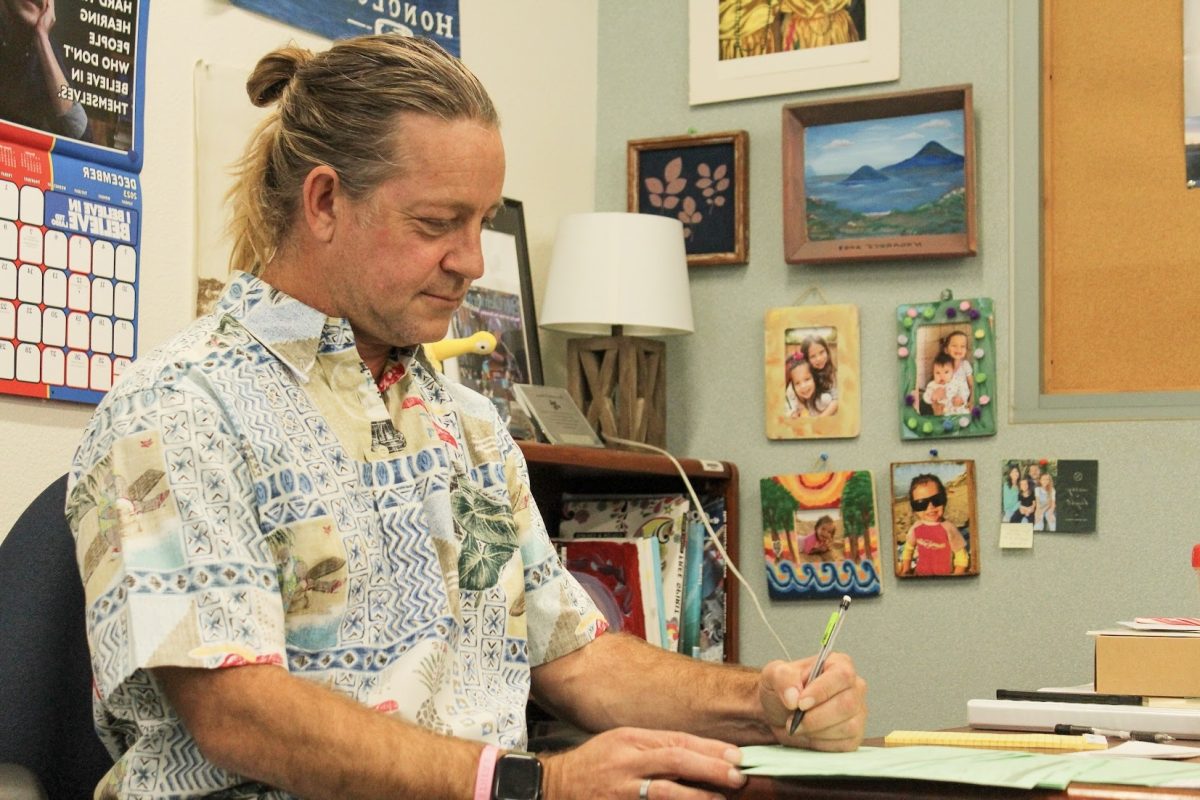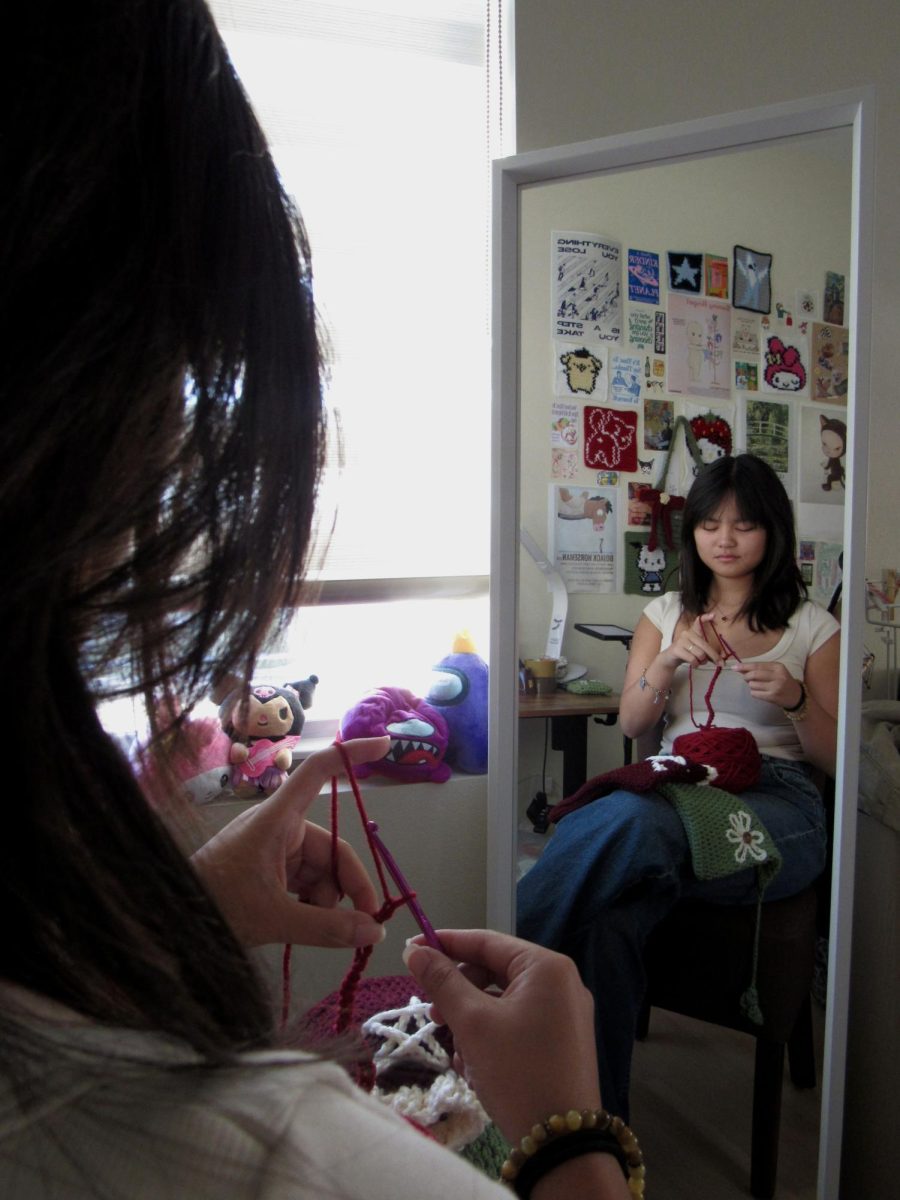Northwood’s campus is massive. We have the ever-expanding wings of classrooms, endless staircases and tucked-away hallways; it sometimes feels like there are more places to not know about. So, in this series for The Howler, I’m on a mission to explore the hidden corners of our school and bring their secrets to light.
This month’s adventure: the stage
Everyone has seen the stage during assemblies, concerts or musicals. But, what most students don’t realize is what happens in the places you never see: behind the curtain, above the lights and even under the floor. To guide me through this place of mystery, I got a tour from Judy Scialpi, Northwood’s dance teacher and a seasoned veteran on the ins-and-outs of the stage.
A floor that isn’t what it seems
My first surprise came when I noticed a rolled-up mat tucked away in the back corner. It turns out the stage doesn’t always use its regular wooden surface.
“For dance performances, we lay out a professional dance floor,” Scialpi said. “It provides a safer surface for the dancers on stage.”
It might not sound like much, but when you’re watching the flips, leaps and spins of a dance performance, that floor is the only thing standing between the dancers and disaster as a hidden detail that shapes the magic.
Curtains, rails and invisible choreography
“There are a lot of moving parts with the rails,” Scialpi said. “Curtains are constantly going up and down, and it all has to be choreographed for timing and safety.”
I learned there isn’t just one curtain. There are travelers, scrims, cycloramas and more—all stacked in precise order behind the stage, awaiting their cues. Some are used to hide scene changes, others to project lights. All can be used to completely transform the stage’s mood in seconds. They run on rails operated by trained students and staff. Both the dancing on stage and the curtain-pulling in the shadows are choreographed.
The catwalk: danger above
Of course, not everything happens on the ground. I spotted a stairway leading upward and had to ask where it went.
“That stairway you see? That’s the catwalk,” Scialpi said. “It goes up to all of these areas above the stage. But you really can’t go up there unless you are highly trained because it can be dangerous.”
It’s where the spotlight operators work, aiming beams of light that guide our eyes during a performance. It’s high, hidden and most people will never climb it. But without it, every musical and play would be left in the dark.
The shell: music’s secret weapon
Not all of the stage’s secrets are invisible. Some are just overlooked—like the orchestra shell.
“It’s a beautiful shell,” Scialpi said. “When the shell comes out, the music kids are stationary, and they’re framed within this structure that makes the acoustics of the theater just amazing.”
The shell doesn’t look particularly special to the average viewer. But, without it, concerts wouldn’t sound nearly as rich. It bounces sound outward so that every trumpet blast and clarinet trill reaches the back row.
The pit: music below
Finally, there’s the orchestra pit, a literal hole under the stage, accessible through a door on the right side of the stage.
“When the pit is opened, there’s a full orchestra down there,” Scialpi said. “It’s a whole other world that happens beneath the performance.”
The actors and dancers may steal the spotlight, but the pit provides the heartbeat. Hidden just below the audience’s line of sight, the musicians create the soundtrack that breathes life into every performance.
Closing the curtain
Backstage isn’t just a storage area or waiting room, it’s an ecosystem of moving floors, timed curtains, dangerous catwalks, echoing shells and secret pits. Each piece plays a role in turning chaos into art.
“Our stage is an amazing place,” Scialpi said.
Based on my tour, I have to agree. Next time you’re sitting in the theater and the lights go down, remember: The magic isn’t always what you can see in front of you. It’s the hidden world working above, behind and below that make all of Northwood’s performances unforgettable.

